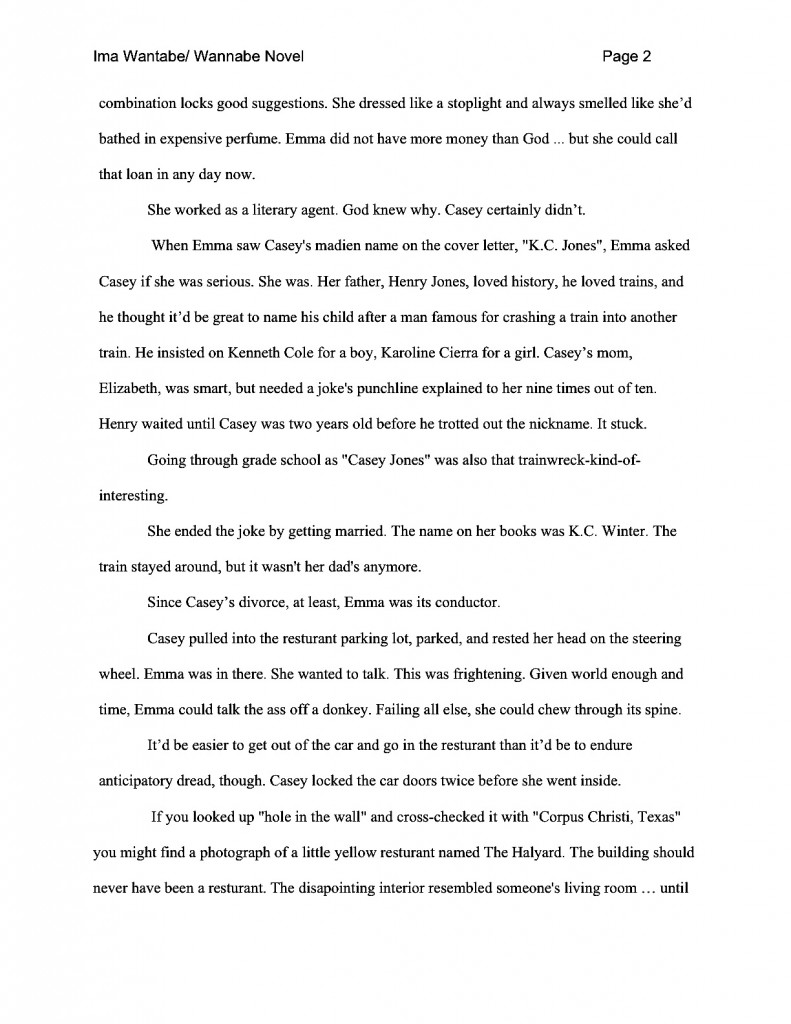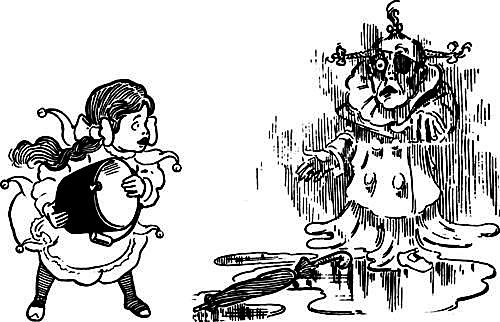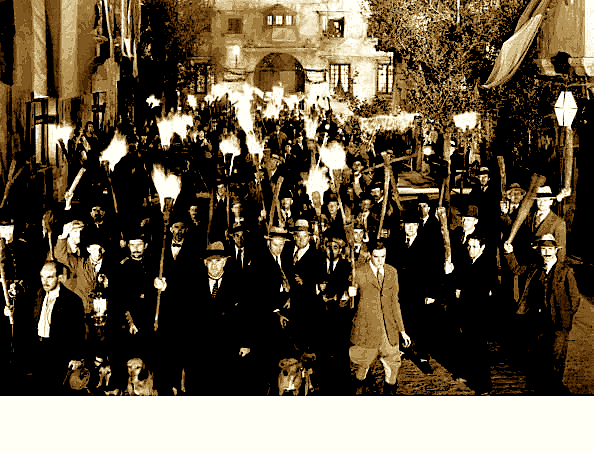And would you mind very much, New Year’s resolvers, if that word were wait?
I know, I know: you want to get that query or submission out the door. You’re resolved, in fact, that this will be the January that you crack the publication code. And the sooner you launch your plans, the better, right, because otherwise, you might lose momentum?
Admirable intentions, all, especially the last: as the media so eager to urge you to make that resolution — or, indeed, any New Year’s resolution — will be telling you in a few weeks, the average New Year’s resolution lasts only a few weeks. Which means, in practice, that far from being the best time of the year to act upon those laudable plans, the first few weeks of the year are strategically the worst.
Or, at the very least, the time when a query or submission is most likely to be rejected. Why? Every year, literally millions of aspiring writers across this fine land of ours make precisely the same New Year’s resolution — with the entirely predictable result that every year, rejection rates go up in the first few weeks of January.
Was that resounding thunk that just reverberated throughout the cosmos the sound of thousands of first-time queriers and submitters’ jaws hitting the floor? I’m not entirely surprised. For most writers new to the game, the notion that any factors other than the quality of the writing and excellence of the book’s concept could possibly play a role in whether a query or submission gets rejected is, well, new. If a manuscript is genuinely good, these eager souls reason, it shouldn’t matter when it arrives at an agency or small publishing house, right? By the same logic, if a query for a truly well-written book — which is, contrary to popular opinion, not the same thing as a truly well-written query — lands on a pro’s desk, it will be received in precisely the same manner if it’s the only query arriving that day, or if it must howl for attention next to hundreds or thousands of incoming queries.
Meanwhile, tomorrow morning, agents, editors at small publishing houses, and the screeners who read their day’s allotment of queries will open their e-mail inboxes and moan, “Why does every aspiring writer in North America hit SEND on January 1? Do they all get together and form a pact?”
Effectively, you do. You all formed such similar New Year’s resolutions, you see.
So did the tens of thousands of successful queriers from last year who decided that after December 31, they were going to stop fiddling with their manuscripts and send those pages the agent of their respective dreams requested, unfortunately. It doesn’t occur to them, understandably, that each of them is not the only one to regard the advent of a new year as the best possible time to take steps to achieve their dreams.
Instead of, say, February 12th. Or the fifth of May. Or October 3. Or, really, any time of the year that the sheer weight of numbers would guarantee that competition would be stiffer for the very few new writer slots available at any well-established agency or small publishing house.
That made half of you do a double-take, didn’t it? “Wait — what do you mean, very few new writer slots ?” queriers and submitters new to the game gasp. “Don’t agents take on every beautifully-written new manuscript and intriguing book proposal that comes their way?”
That’s a lovely notion, of course, but in practical terms, it would be impossible. Think about it: reputable agents only make money when they sell their clients’ books to publishers and when those books earn royalties, right? There’s more to that than simply slapping covers on a book and shipping it to a local bookstore. In any given year, only about 4% of traditionally-published books are by first-time authors, and those books tend as a group to be less profitable: unless a first-timer already enjoys wide name recognition, it’s simply more difficult for even the best marketing campaign to reach potential readers.
So at most agencies, most of the income comes from already-established clients — which means, on a day-to-day basis, a heck of a lot of agency time devoted to reading and promoting work by those authors. In recent years, selling their work has gotten appreciably harder, as well as more time-consuming, yet like so many businesses, publishing houses and agencies alike have been downsizing. At the same time, since writing a book is so many people’s Plan B, hard economic times virtually always translate into increased query and submission volume. That means agencies have to devote more hours than ever before to processing queries and submissions — an activity that, by definition, does not pay them anything in the short run.
Why should any of that matter to a new writer chomping at the bit? First, high querying and submission volume plus tight agency budgets translate, inevitably, to less time spent on each query and submission. Equally inevitable — and you might want to sit down for this one: the more successful an agent is, the more queries s/he will receive, and thus the greater the pressure on that agent’s screener to narrow down the field of contenders as rapidly as possible.
Why, you gasp, clutching your palpitating heart? Because time does not, alas, expand if one happens to have good intentions, most good agents simply don’t have time to take on more than a handful of new clients per year.
Starting to think differently about the tens of thousands of queries that might be jostling yours in an agency’s inbox tomorrow if you hit SEND today? Or the manuscripts that will be stacked next to yours if you stuff those requested pages into a mailbox later in the week?
To be fair, the overwhelming majority of those queries will be easy for the screener — known here at Author! Author! under the collective name of Millicent, to help us remember that she’s a human being with individual literary tastes working for an agent with personal preferences, as well as literary market savvy — to reject at first glance, and often for reasons that have little to do with the writing. At this time of year especially, new writers often pick agents to query essentially at random. Out comes that logic we saw earlier: if agents represent good books, and a book is well written, any agent could represent it successfully, right?
Actually, no: agents specialize, and it’s very much to both a good book and a good writer’s advantage that they should. The publishing industry is wide-ranging and complex, after all; no one who sells books for a living seriously believes that every well-written book will appeal to every reader. Readers tend to specialize, too.
That’s why, in case you had been wondering, the publishing world thinks of books in categories: fantasy, YA, Western, memoir, etc.; it’s a matter of reaching a specific target audience. While an individual reader may well buy books across a variety of categories — indeed, most do — readers who gravitate toward a certain type of book tend to share expectations, and publishers market categories accordingly. A devotee of paranormals, for instance, would be disappointed if he picked up a book presented as a vampire fantasy, but the storyline didn’t contain a single bloodsucker. By the same token, a lover of literary fiction would be dismayed to discover the novel she’d been led to believe was an intensive character study of an American family turned out to be an explosion-packed thriller.
Acquiring editors also harbor those expectations — and since no editor or publishing house brings out every different kind of book, agents would be less effective at their jobs if their only criterion for selecting which books to represent was whether they liked the writing. They, too, tend to specialize, handling only certain book categories.
Again, why should this trouble a writer longing to land an agent, any agent, as quickly as possible? There is no query easier for Millicent to reject than one for a book in a category her boss does not represent. No matter how beautifully that query presents the book’s premise, it’s a poor fit for her agency. Approaching an agent simply because he’s an agent, then, tends to be the first step on a path to rejection.
Especially, if you can stand my harping on this point, in January. New Year’s resolvers, after all, are frequently in a hurry to see results. Too much of a hurry, often, to do much research on any given agent before sending off a query. You would not believe, for instance, how many aspiring writers will simply type literary agent into Google and e-mail the first few that pop up. Or how many more will enter a generic term like fiction into an agency search, intending to query the first 80 on the list.
Usually without checking out any of those agents’ websites or listings in one of the standard agents’ guides to find out what those fine folks actually represent. And that’s a pity, because not only is an agent who already has a solid track record selling a particular category more likely to be interested in similar books — that agent will also have the connections to sell that type of book. Which means, ultimately, that approaching an agent specializing in books like yours could mean getting published faster.
Yes, really. You don’t just want to land any agent, do you? You want to entrust your book to the best possible representative for it.
I sense some grumbling out there. “But Anne,” the disgruntled mutter, and who could blame you? “All I want to do is get my book published; I know that I need an agent to do that. But I don’t have a lot of time to devote to landing one. Thus my wanting to act upon my New Year’s resolution toute suite: I had a few spare moments over the holidays, so I was finally able to crank out a query draft. I understand that it might be a better use of my querying time to rule out agents who don’t represent my type of book at all, but why wouldn’t sending my query to a hundred agents that do be the fastest way to reach the right one? That way, I could get all of my queries out the door before I lose my nerve — or my burst of new year-fueled energy.”
I’ve written quite a bit on this blog about why generic queries tend not to be received as kindly in agencies as those that are more tightly targeted; there’s a reason, after all, that the stock advice on how to figure out which agents to query has for years been find a recently-released book you like and find out who represented it. Admittedly, that excellent advice was substantially easier to follow back in the days when publishers routinely allowed authors to include acknowledgements — it used to be quite common to thank one’s agent. Any agency’s website will list its primary clients, however, and I think you’ll be charmed to discover how many authors’ websites include representation information.
In case I’m being too subtle here: no recipient of a generic query will believe that its sender had no way to find out what kinds of books she represents, or which established authors. Neither will her Millicent. Small wonder, then, that any screener that’s been at it a while can spot a query equally applicable to every agency in the biz at twenty paces — especially if, as so often is the case with mass-produced mailed queries, it’s addressed to Dear Agent, rather than a specific person. Or, as is even more common, if it is rife with typos, too informal in tone, or simply doesn’t contain the information an agent would want to know before requesting pages.
Given the intensity of competition for Millicent’s attention on an ordinary day of screening, any one of these problems could trigger rejection. During the post-New Year’s query avalanche, it’s even more likely.
Let’s take a moment to picture why. Agents and editors, like pretty much everybody else, often enjoy the holidays; they’ve even been known to take time off then, contrary to popular opinion amongst New Year’s resolution queriers. Since it’s hard to pull together an editorial committee — and thus for an acquiring editor to gain permission to pick up a new book — with so many people on vacation, it’s fairly common for agents and editors alike to use work time during the holidays to catch up on their backlog of reading. (See earlier point about existing clients’ work.) It’s not, however, particularly common to employ that time reading queries.
Why? The annual New Year’s resolution barrage about to descend, of course; they know they’ll be spending January digging out from under it. All through the holiday season, writers across the English-speaking world have been working up both drafts and nerve.
Picture, then, what will greet your garden-variety Millicent when she walks into the office on the first working day of January. Not only will the usual post-vacation backlog await her, but so will the fruits of every New Year’s resolver’s enthusiasm. Every inbox will be stuffed to overflowing; thousands of e-mails will be crowding the agency’s computers; the mailman will be staggering under armfuls of envelopes and manuscript boxes.
Tell me, if you were Millicent, how quickly would you be inclined to read through that tall, tall stack of queries? How much time would you tend to spend on each one, compared to, say, what you might devote to it on March 8th? Would you be reading with a more or less charitable eye for, to pluck an example out of thin air, the odd typo or a storyline that did not seem to correspond entirely with your boss’ current interests?
Before you answer any of those burning questions, consider: working her way through that day’s correspondence clear her schedule, or even enable her to see her desk again. As January progresses, each day will bring still more for her to read. Not every New Year’s resolution gets implemented at the same pace, after all, nor does they have the same content. This month, however, Millicent may be sure that each fresh morning will provide additional evidence that writers everywhere have their noses to the wheel — and each Monday morning will demonstrate abundantly that New Year’s resolvers are using their weekends well.
At least for the first three weeks or so. After that, the New Year’s resolution energy tends to peter out.
Not entirely coincidentally, that’s also when New Year’s resolution queriers tend to receive their first sets of mailed rejections — and when e-mailing queriers begin to suspect that they might not hear back at all. (An increasingly common agency policy, by the way: rejection via silence has been the norm for the past few years.) The timing on those rejections is key to Millicent’s workload, as an astonishingly high percentage of first-time queriers give up after only one or two attempts.
That’s completely understandable, of course: rejection hurts. But as any agent worth her salt could tell you, pushing a book past multiple rejections is a normal part of the publication process. Just as — again, contrary to popular opinion — even the best books generally get rejected by quite a few agents before the right one makes an offer to represent it, manuscripts and book proposals seldom sell to the first editor that reads them.
Translation: it may feel like a rejection from a single agent represents the publishing industry’s collective opinion about your writing, but it’s just not true. Individual agents have individual tastes; so do their Millicents. Keep trying until you find the right fit.
But you might want to wait a few weeks — and if it’s not clear yet why, I ask you again to step out of a writer’s shoes and into Millicent’s: if you knew from past experience how many fewer queries would be landing on your desk a few weeks hence, would you read through this week’s bumper crop more or less quickly than usual? Would you be more or less likely to reject any particular one? Or, frankly, wouldn’t you be a bit more tired when you read Query #872 of the day than Query #96?
Still surprised that rejection rates tend to be higher this time of year? Okay, let me add another factor to the mix: in the United States, agencies must produce the tax information for all of their clients’ advances and royalties for the previous year by the end of January.
That immense sucking sound you just heard was all of the English majors in the country gasping in unison. Representing good writing isn’t just about aesthetic judgments, people; it’s a business. A business based upon aesthetic judgments, of course, but still, it’s not all hobnobbing with the literati and sipping bad Chardonnay at book launches.
It’s also a business run by people — living, breathing, caring individuals who, yes, love good writing, but also can get discouraged at a heavier-than-usual workload. They can become tired. Or even slightly irritated after reading the 11th generic query of the day, or spotting five typos in the 111th.
Imagine, then, what it might feel like to read the 1,100th. Of the day, if one happens to be perusing it within the first few weeks of January.
To repeat my word du jour: wait. You’re an original writer; why would you need to pick the same day — or month — to launch your dreams as everybody else?
I raise my glass to toast those dreams. As always, my New Year’s resolution is to help good writers realize theirs, not just through general encouragement, but also practical advice. Keep up the good work!




































